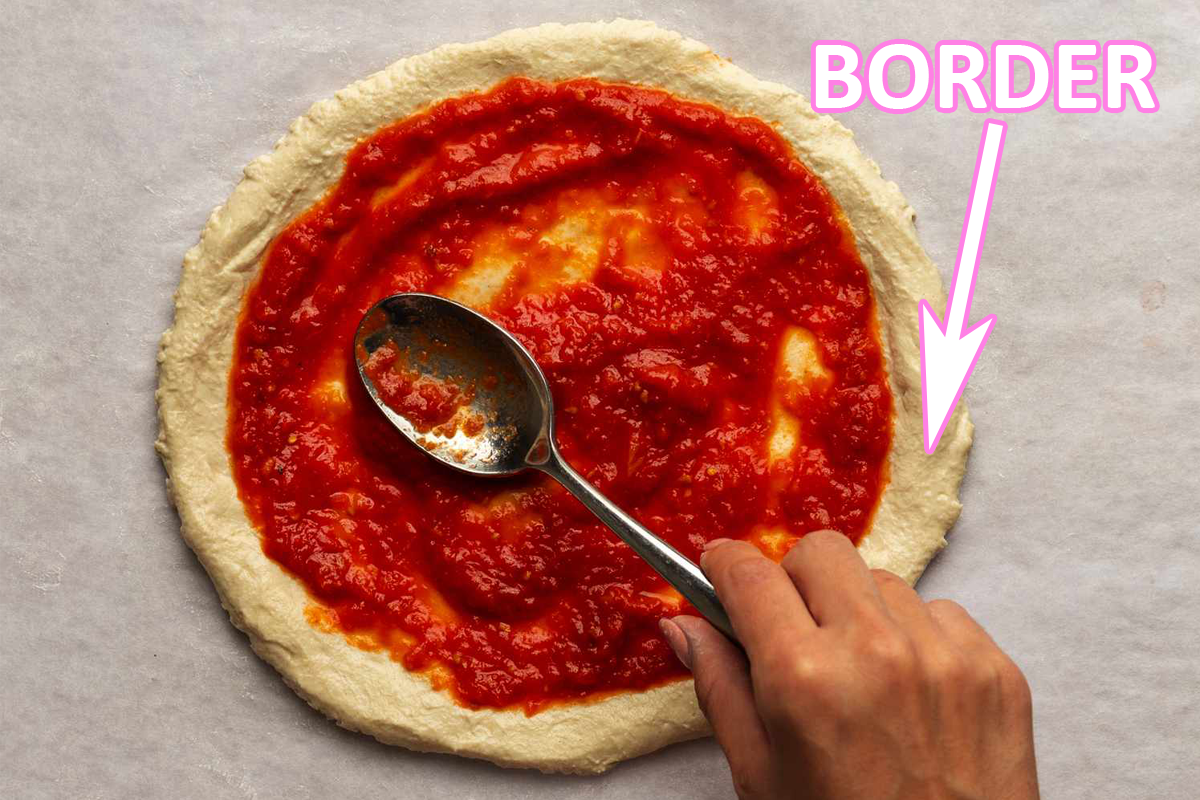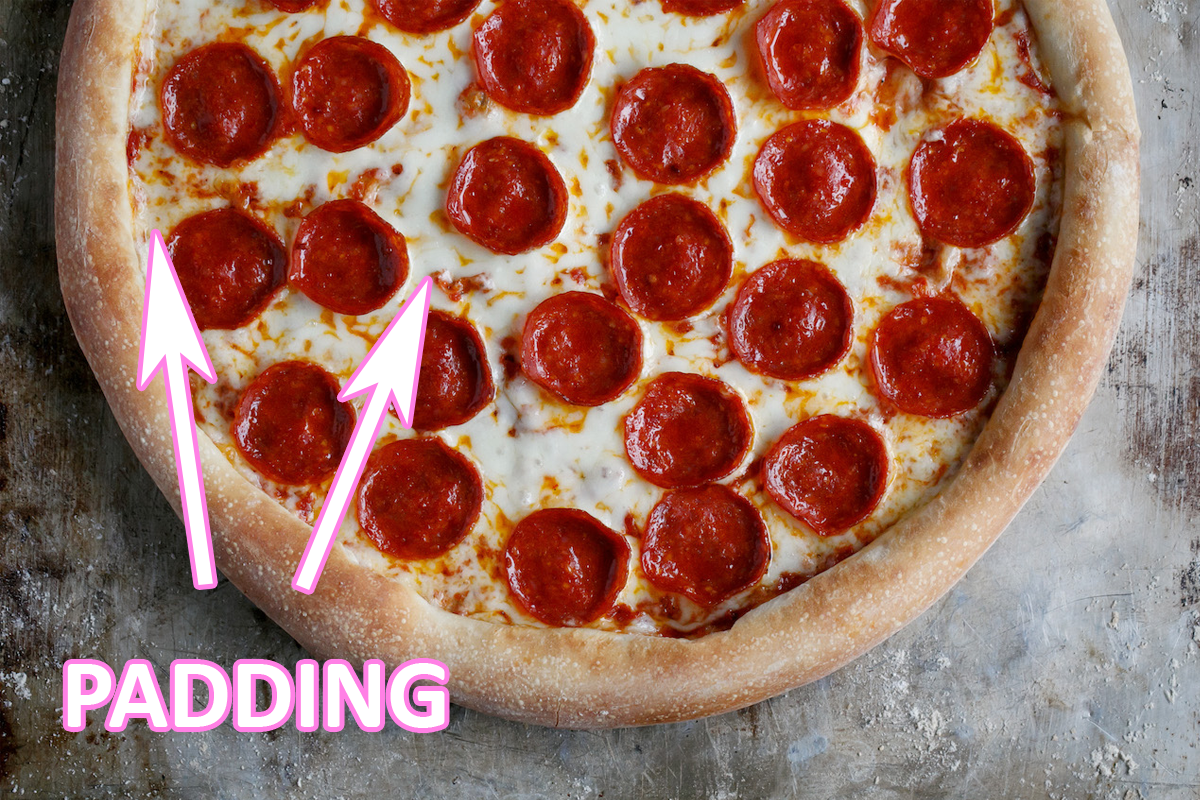Border, Padding, and Margin
Imagine you have a pizza. Everyone likes pizza. Well today we are going to use a very cumbersome metaphor to relate the CSS concept of Border, Padding, and Margin, to a real life, delicious pepperoni pizza.
So you got your pizza base ready to go (your delicious DIV pizza base). Now you wanna add some stuff to it. So first you spread a bunch of sauce (content) on it. Yummy homemade tomato sauce (this ain't no store bought, frozen pizza). But wait! You don't want the sauce to go over the edges, so you decide to have a BORDER of pizza base at the edges with no sauce (who doesn't love a crunchy pizza crust). But make sure you set your "box-sizing" to "border-box", or you'll somehow end up with a crust that's on the outside of your pizza.

Now it's time for toppings. Slap some cheese and pepperoni on that pizza. Delicious. You aren't keen on there being too much pepperoni and all the slices touching (too much sodium), so you decide to leave some space between the slices. This is your cheese PADDING. Padding is a space you leave between elements INSIDE your DIV. Be careful though, add too much padding and elements will spill out of your DIV, you greedy guts.

Now you have a delicious, healthy pizza. But wait! You can't just grab that hot pizza with your hands! That freshly cooked pizza needs to go on a plate, so it doesn't damage you or other things around it. This is your MARGIN. Margin is a space that is used to keep this pepperoni pizza DIV away from other things, so no-one gets burned.

You now have a yummy pizza to share (or not, I'm not judging). I hope you now understand border, padding, and margin better than I did when I began writing this!
06 April 2023